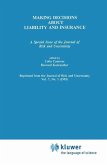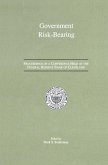Two related trends have created novel challenges for managing risk in the United States. The first trend is a series of dramatic changes in liability law as tort law has expanded to assign liability to defendants for reasons other than negligence. The unpredictability of future costs induced by changes in tort law may be partly responsible for the second major trend known as the `liability crisis' - the disappearance of liability protection in markets for particularly unpredictable risks.
This book examines decisions people make about insurance and liability. An understanding of such decision making may help explain why the insurance crisis resulted from the new interpretations of tort law and what to do about it. The articles cover three kinds of decisions: consumer decisions to purchase insurance; insurer decisions about coverage they offer; and the decisions of the public about the liability rules they prefer, which are reflected in legislation and regulation. For each of these three kinds of decisions, normative theories such as expected utility theory can be used as benchmarks against which actual decisions are judged.
This book examines decisions people make about insurance and liability. An understanding of such decision making may help explain why the insurance crisis resulted from the new interpretations of tort law and what to do about it. The articles cover three kinds of decisions: consumer decisions to purchase insurance; insurer decisions about coverage they offer; and the decisions of the public about the liability rules they prefer, which are reflected in legislation and regulation. For each of these three kinds of decisions, normative theories such as expected utility theory can be used as benchmarks against which actual decisions are judged.








